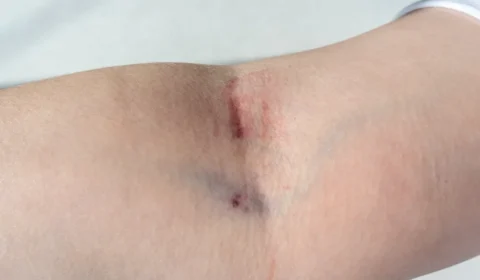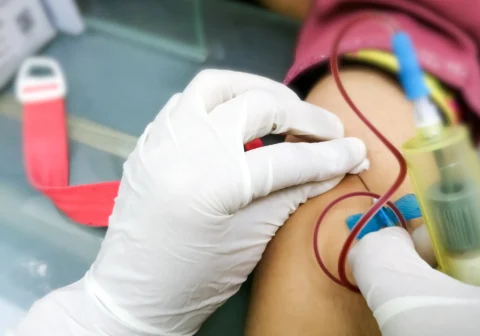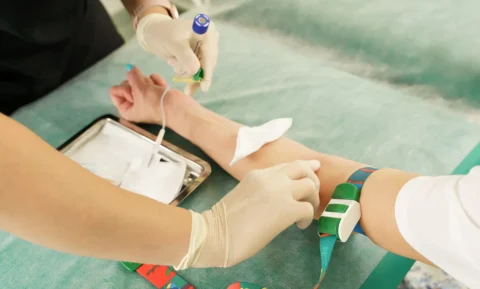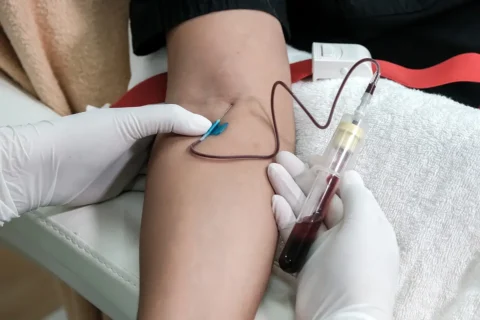Whether you’ve received a Botox training course as a nurse practitioner or as a beauty therapist, you’d agree that mastery of facial anatomy is one of the most essential lessons to become an expert in facial injectables. Having an in-depth understanding of it allows Botox injectors not only to locate the muscle groups and know where to inject the toxin but also set up your patients’ treatments for success, making it one of the first topics in Botox training.
So what should you know about getting Botox anatomy training? This Botox training course equips trainees with a deeper understanding and command of the facial anatomy, especially identifying and knowing the function of muscle groups, for conducting treatment with botulinum toxin. Anyone enrolled in a primary or even advanced Botox training course should receive lessons in facial anatomy.
What is Botox Anatomy Training?
An injection of Botox cosmetic relaxes muscles that become overworked as one does facial expressions. Aside from its aesthetic uses, botulinum toxin is also one of the most reliable preventative therapies for many conditions.
These conditions involve chronic migraine, muscle spasms, and other diseases. Because of this, knowing the location and function of muscle groups is key to delivering the intended medical and cosmetic effects and providing a safe and successful treatment.
Having exceptional command of the anatomy and muscle groups is one of the primary requirements for becoming a professional injector, whether you have a medical background or not. Because of this, Botox training programs focus on students mastering muscle groups in the face, head, and neck.
Who Can Take the Training
Students taking up a program in Botox injection are required to finish their course in facial anatomy. Those who can apply for a training program in cosmetic injectables depend on the regulations of their industry relative to location and the training packages available.
Some institutions or training facilities require only medical professionals as applicants, where they can receive a level 7 certification of aesthetic training. This is the same requirement for Botox courses for preventative medications. So if you’re a registered nurse, physician assistant, or any other healthcare provider, you may consider taking up this program to grow your career.
What You’ll Learn in Your Training
Botox certification programs provide an exhaustive course on anatomy training. The specifics of what you’ll learn depend on the training provider. But most of the lessons will include a facial aesthetic introduction, head and neck anatomy, documentation, and an advanced course on anatomy.
Facial Aesthetics Introduction
Learning about the introduction to aesthetic medicine provides students with a backdrop of why they should master the anatomy of the face, neck, and head. This will equip students with the ways to come up with a diagnosis and treatment plan. Delegates should know how botulinum toxin works, the number of doses needed per brand, and if the patient is a good fit for the treatment.
Your program might also include some dermal filler training courses for you to know other treatments that can complement or replace Botox. Other treatments include laser treatments, microdermabrasion, and other facial aesthetic procedures. Coming up with a good treatment plan depends on the area of the facial anatomy you’re going to work on.
Head and Neck Anatomy
Applicants of this medical aesthetics program are expected to develop a sophisticated understanding of the muscle anatomy of the neck and face. This allows Botox injectors to locate the appropriate muscle groups and determine their functions.
The muscles at the head and neck are also necessary, especially for conditions, like muscle spasms, chronic migraine, and other neuromuscular problems. Having an intricate knowledge of the head and neck anatomy may help you produce predictable results, giving a safe treatment.
Documentation
Preparing detailed documentation of your patient’s medical history is necessary for their Botox treatment. Trainees will learn thorough record-keeping and photography for their patients — this will indicate the exact injection sites and the outcome of these Botox injections. More often than not, Botox injections might still have a few bumps that your doctor should assess, especially when it’s for preventative medicine.
This doesn’t always mean that Botox treatment isn’t doing its job — it only means that your dose might need some adjusting or the doctor needs to change the injection site. That’s why the doctor and patient will work to arrive at a better treatment plan. This is why documentation is critical when caring for patients and evaluating their medical records. Delegates should learn proper ways to photograph the treatment and prepare records.
Integrating Botox into Office Practice
Once trainees of anatomy for Botox injection courses have received the necessary lessons they need, they will then receive practical training. They would put these learnings to the test once they’ve received live demonstrations on administering botulinum toxin. This part of the training allows them to get down to the bottom of integrating the treatment into the anatomy.
Advanced Anatomy
After taking foundation Botox lessons, aspiring injectors will then take an advanced course where they will have a deeper understanding of the anatomy of different cosmetic injectables. They will dig deeper into the facial muscles, insertions, origins, arterial supply, and functions. Your mentors will discuss these aspects of the facial muscles relative to 3D tissue planes.
Reviewing Relationship of Soft Tissues to the Bone
A comprehensive course on anatomy for Botox treatment involves reviewing the relationship of the soft tissues to the body structures of different treatment areas. With digital models of cadavers and skulls, the delegates will also study the sensory innervation of the head and neck relative to soft and hard tissue structures.
These lessons will provide students with a deeper knowledge of parafunctional habits like grinding, bruxing, and other abnormal actions. These are also related to other conditions, like myofascial pain, headache, migraine, and more.
Botox Training from the Best Experts in the Industry at FACE Med Store
Anatomy courses for Botox certification programs provide students with an in-depth understanding of the muscle groups and nerves at the face, head, and neck. Having a comprehensive knowledge of facial anatomy is key to providing safe and successful treatments involving cosmetic injectables. That’s why it’s worth investing in reliable basic or advanced Botox training.
FACE Med Store is one of the many trusted training providers offering educational packages about Botox injections. Our aesthetic training programs also include a detailed course on facial anatomy, mentored by some of the best experts in the industry. You can learn more about our basic and advanced course programs in Botox and other facial injectables by visiting our website or giving us a call.






